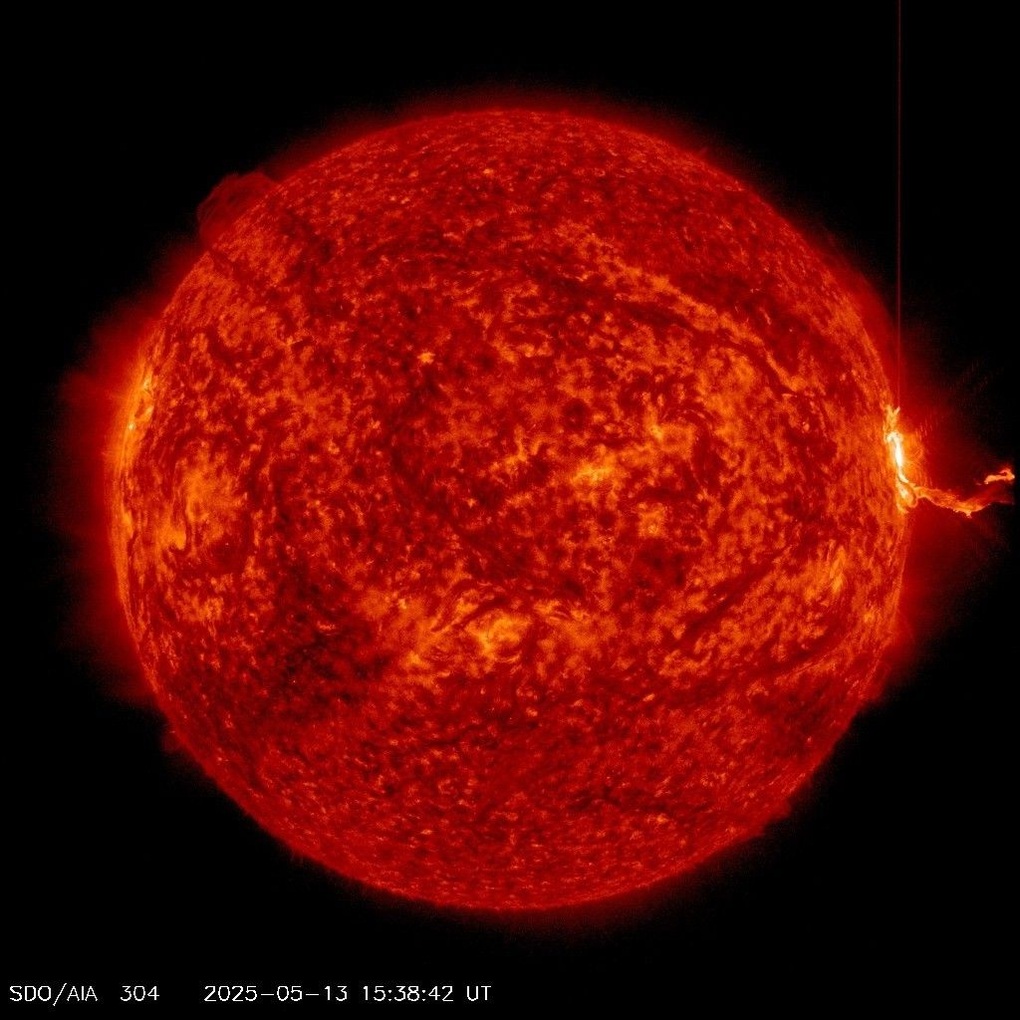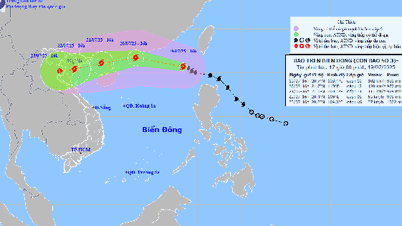
NASA's Solar Dynamics Observatory captured this image of a solar flare, which appears as a bright flash on the right, on May 13 (Photo: NASA).
On May 13, solar observation systems recorded one of the most powerful solar flares of the year, reaching level X1.2 on the solar radiation scale.
The event occurred at 10:38 p.m. (Vietnam time) and was recorded by NASA's Solar Dynamics Observatory (SDO) and many other space observatories.
The emission region, identified as Active Region 3685, is located on the western edge of the Sun. The image provided by NASA shows a flash of intense light in this region, characteristic of X-class eruptions. This is the highest of the three classifications (C, M and X) of solar radiation intensity.
Class X solar flares are known to be accompanied by coronal mass ejections (CMEs). These are plasma clouds containing billions of tons of material from the outermost layer of the Sun, which can travel at speeds of millions of kilometers per hour in interplanetary space.
If a CME were to head directly toward Earth, it could trigger a powerful magnetic storm that could directly impact power grids, satellites, GPS navigation, radio equipment, and could even increase the risk of radiation exposure for astronauts and passengers on polar flights.
Scientists are currently analyzing the trajectory of the CME associated with the May 13 eruption to determine its ability to interact with Earth's magnetic field.
NOAA's Space Weather Prediction Center (SWPC) warns that HF radio interference and signal degradation effects were noted in some areas, particularly those in daylight at the time of the event.
Notably, this event occurred as the Sun approached the maximum of Solar Cycle 25, which began in late 2019.
According to NASA and international space research organizations, the maximum phase is expected to peak later this year, or early 2026. In recent months, the frequency of M- and X-class flares, as well as CMEs, has increased markedly - a typical feature of this phase of the 11-year cycle of solar activity.
One positive impact expected from this event is the possibility of aurora appearing at lower latitudes than usual.
Accordingly, if the CME is accompanied by a strong enough magnetic storm and heads straight towards Earth, the aurora phenomenon can be observed in many areas far from the two geomagnetic poles, providing a rare observation opportunity for astronomy enthusiasts.
Space meteorological agencies are continuing to closely monitor the situation to issue timely warnings to telecommunications, transport and aviation systems.
Source: https://dantri.com.vn/khoa-hoc/mat-troi-bung-phat-manh-me-de-doa-trai-dat-voi-chu-ky-moi-20250514082511747.htm

































































































Comment (0)